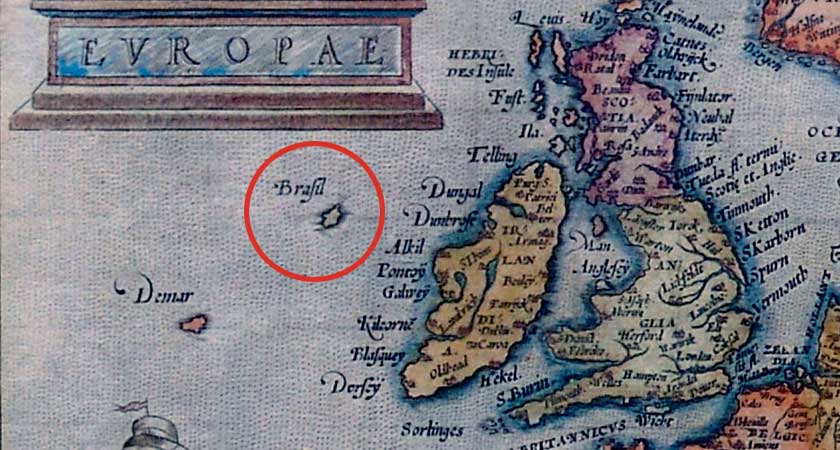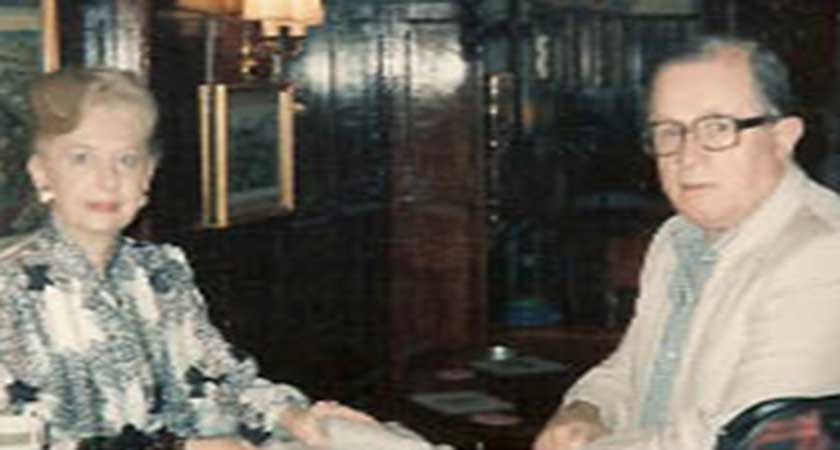FOLLOWING on from our first piece on bizarre unsolved Irish mysteries, we look at five more perplexing cases that still have investigators stumped.
1: Peter Bergmann
 The man known as Peter Bergmann was last caught on camera at the bus station in Sligo (Picture: RTÉ)
The man known as Peter Bergmann was last caught on camera at the bus station in Sligo (Picture: RTÉ)Some mysteries, rather than becoming clearer, seem to grow more puzzling the more we learn about them. Take the case of Peter Bergmann. Unlike a missing person case, there is a body, plus CCTV and witnesses. Unfortunately, no one knows who he is.
On June 12, 2009, a man checked into the Sligo City Hotel, paying cash, having arrived by bus from Derry. The Germanic-sounding guest registered under the name Peter Bergmann and gave an Austrian address.
Over the next three days, CCTV showed him leaving the hotel several times with a full plastic bag before returning empty-handed. He was recorded buying stamps and airmail stickers. Bergmann also asked a taxi driver to show him a quiet place to go swimming and was taken to Rosses Point. Upon surveying the area, Bergmann, seemingly satisfied, took the taxi back to Sligo.
On June 15, Bergmann checked out of the hotel. CCTV at Sligo bus station showed him repeatedly taking pieces of paper out of his pocket and examining them before tearing them up, then boarding a bus to Rosses Point and buying a one-way ticket. The next day his body and some scattered possessions were found washed up on the beach.
Bizarrely his autopsy revealed no sign of saltwater drowning. It did show he was in failing health, but there was no trace of pain medication in his system. His inquest heard no one named Peter Bergmann matched the description of the deceased and the Austrian address he provided at the hotel was false. He had removed the labels from his clothes, while there was no match for his fingerprints. Gardaí believe he was gradually disposing of his personal effects each time he left the hotel with the full plastic bag, but these were never recovered. The recipients (or even the destination) of any correspondence were never established.
Who was Peter Bergmann? Why did he go to such pains to hide his identity? Why was he in Ireland? Had he planned to commit suicide? How did he die? Where are his belongings? Who did he write to? What was on the torn paper?
The answers to these questions seem as elusive as ever after French paper Le Monde reported in March 2015 that because a body has been recovered, Interpol can’t classify the unknown man in either its ‘Missing’ or ‘Wanted’ categories.
2: Aer Lingus flight 712
Flying from Cork to London takes just over an hour, but it was time enough to produce one of the most bizarre mysteries in Irish aviation history.
Aer Lingus flight 712 left Cork at 10.32am on March 24, 1968 — a clear, sunny day. However half an hour later its last transmission was “12,000 feet, descending, spinning rapidly”. The Vickers Viscount 803, named St Phelim, subsequently crashed into the sea off Tuskar Rock, Co. Wexford, with the loss of all 61 passengers and crew. No cause for the crash was definitively determined, leading to conspiracy theories of cover-ups.
A 1970 report by investigator Richard O’Sullivan said: “There is evidence which could be construed as indicative of the possible presence of another aircraft or airborne object in the vicinity which, by reason of collision, or by its proximity causing an evasive manoeuvre to be made, or by its wake turbulence, might have been the initiating cause of an upsetting manoeuvre resulting in the Viscount entering a spin or spiral dive.”
One theory claimed the plane was accidentally struck by a missile fired from a Ministry of Defence testing station on the Welsh coast. Another posited that the aircraft was shot down by a British warship after it was mistaken for a target drone, while a third possibility was that an unmanned drone struck the plane.
Suspicions about a British cover-up weren’t helped by the Royal Navy’s search and recovery efforts. They were unable to find the wreckage after almost three months searching the suspected crash site, yet a trawlerman found it on his first search of the area. The Navy then tried to raise the fuselage without using a steel net and the wreckage broke up and sunk back to the sea-bed, taking any clues as to the plane's fate with it.
After then Enterprise Minister Mary O’Rourke re-opened the case in 1999, a 2002 report dismissed the conspiracy theories. Using previously discounted witness testimony to chart a revised flight path for the St Phelim, it concluded that the most likely scenario was that metal fatigue, corrosion or a bird strike over Old Parish, Co. Waterford led to structural failure causing the crash.
However some family members refused to accept these findings and Ms O’Rourke said the case would remain open in case new evidence comes to light.
3: Shergar
The world’s most famous race horse is now as well known for his mysterious kidnapping as for his exploits on the track. Shergar was named European Horse of Year in 1981, the same year he won the Epsom Derby by a still-unbeaten record 10 lengths.
Shergar was enjoying his retirement (he produced 35 foals from his single season at stud) when he was kidnapped on February 8, 1983 from Ballymany Stud near The Curragh, Co. Kildare. Syndicated at stud for 40 shares totalling £10million and with stud fees commanding £80,000, ransom was clearly the motivation for the gang of armed robbers, who held the family of head groom Jim Fitzgerald hostage while they escaped with the horse.
Using a code word supplied to Fitzgerald, the kidnappers negotiated with a representative of the Aga Khan, Shergar’s majority shareholder. They demanded £2million, but Shergar’s 35 syndicate members refused to pay, fearing it would encourage future kidnappings.
Although they have never officially claimed responsibility, the IRA were suspected of the kidnapping. One theory is that the stallion became distressed and injured his leg. The inexperienced kidnappers either shot Shergar in the ensuing panic, or shot him because they believed they would get no ransom for a lame horse.
However as Shergar was a gentle horse, another theory suggests that he was simply shot to death — “machine-gunned to death”, according to an IRA source — when it became clear no ransom would be paid. The reasoning was that it was too risky to release him alive with gardaí staking out properties linked to IRA members in their hunt for the horse.
More outlandish theories have suggested Colonel Gadaffi or the New Orleans mafia ordered the kidnapping.
Various burial sites have been mooted but the popular theory is that Shergar is buried in a bog in Co. Leitrim. But despite gardaí at the time suggesting they would use psychics to solve the case, no trace of Ireland’s favourite horse has ever been found.
4: Hy-Brasil
Nothing to do with the South American country, Hy-Brasil is Ireland’s Atlantis — a mythical island off the west coast of Ireland said to inhabit an advanced civilization and fantastic beasts. Legends claim it is hidden from sight by mists that clear for just one day every seven years.
As far-fetched as it sounds, cartographers included Hy-Brasil on maps from the 1300s until the 19th century, often depicting it as a circular isle bisected by a river.
Expeditions set sail from Bristol in 1480 and 1481 but failed to find the island. In 1674, John Nisbet claimed he found Hy-Brasil while travelling from France to Ireland and sent a party of four ashore where they encountered giant black rabbits and a wizard living in a castle.
In 1684, Irish historian Roderick O’Flaherty wrote in his Chorographical Description of West or H-Iar Connaught about “that enchanted island called O’Brasil”. In his book, O’Flaherty wrote of Murrough O’Ley, who claimed he was kidnapped by three men and taken to Hy-Brasil, and of a fisherman who was able to “practice surgery and psychic” by means of an enchanted book given to him by one of the island’s inhabitants.
In 1872, author TJ Westropp claimed to have seen the island three times. On the last occasion, he brought others with him to prove its existence and they watched as the island allegedly disappeared.
One logical explanation is that it is Porcupine Bank, a raised area of seabed 120 miles off the Irish coast. Although now 200 metres below sea level, it may have been visible before sea levels rose after the Ice Age and the story of the island was then passed down through generations. It could also be a meteorological optical illusion caused when layers of hot and cold air refract to produce mirages.
There is one final mysterious twist though. In 1980 a US serviceman based at RAF Woodbridge in Suffolk, England claimed to have encountered a UFO during what become known as the Rendlesham Forest Incident. A day after touching hieroglyphic symbols on the side of the craft, Sergeant Jim Penniston starting seeing ones and zeroes in his mind’s eye and wrote them down, filling 16 pages. Thirty years later a researcher recognised his notes as binary code and when translated, he claimed it gave coordinates consistent with the purported location of Hy-Brasil.
5: Conor and Sheila Dwyer
Conor and Sheila Dwyer were a normal, married couple in their early sixties who lived in Fermoy, Co. Cork. Sheila was a home-maker while Conor worked as a chauffeur and taxi-driver. However the happy, well-liked couple disappeared without a trace in 1991.
The Dwyer’s were last seen after attending a funeral at St Patrick’s Church in the town on April 30, while Mrs Dwyer spoke to her sister on the phone the following day. However when no one heard from the pair for a couple of weeks, Mrs Dwyer’s sisters contacted gardaí.
When gardaí searched the Dwyer’s house, there was no sign of a struggle or forced entry. All their possessions were still there, including passports and IR£1,000 in cash. The only thing missing, apart from the couple, was their car.
The couple’s bank accounts have never been accessed. Possible sightings in Dublin and even Munich were followed up but could not be substantiated.
Strangely, it was later revealed that Conor went missing for several years in the 1980s before eventually returning, but there is no information about where he went.
The year before the Dwyers disappeared, 52-year-old Billy Fennessy went missing from the town in similar circumstances. However in 2012, the remains of the successful businessman were found in his car in the River Blackwater during a routine dive by the Blackwater Sub Aqua Search and Rescue team. Foul play was not suspected.
Did a tragic accident lead to a similar fate for the Dwyers? No trace of the couple or their car has ever been found and while the Fennessy family have gained closure, the agonising wait goes on for the Dwyers.





